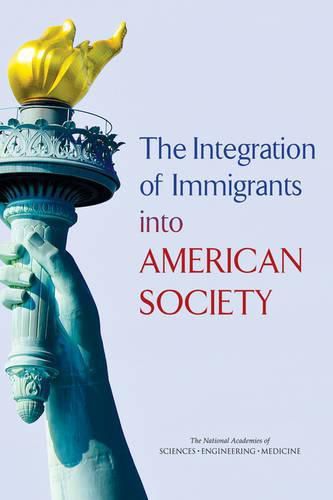Readings Newsletter
Become a Readings Member to make your shopping experience even easier.
Sign in or sign up for free!
You’re not far away from qualifying for FREE standard shipping within Australia
You’ve qualified for FREE standard shipping within Australia
The cart is loading…






The United States prides itself on being a nation of immigrants, and the country has a long history of successfully absorbing people from across the globe. The integration of immigrants and their children contributes to our economic vitality and our vibrant and ever changing culture. We have offered opportunities to immigrants and their children to better themselves and to be fully incorporated into our society and in exchange immigrants have become Americans - embracing an American identity and citizenship, protecting our country through service in our military, fostering technological innovation, harvesting its crops, and enriching everything from the nation’s cuisine to its universities, music, and art.
Today, the 41 million immigrants in the United States represent 13.1 percent of the U.S. population. The U.S.-born children of immigrants, the second generation, represent another 37.1 million people, or 12 percent of the population. Thus, together the first and second generations account for one out of four members of the U.S. population. Whether they are successfully integrating is therefore a pressing and important question. Are new immigrants and their children being well integrated into American society, within and across generations? Do current policies and practices facilitate their integration? How is American society being transformed by the millions of immigrants who have arrived in recent decades?
To answer these questions, this new report from the National Academies of Sciences, Engineering, and Medicine summarizes what we know about how immigrants and their descendants are integrating into American society in a range of areas such as education, occupations, health, and language.
$9.00 standard shipping within Australia
FREE standard shipping within Australia for orders over $100.00
Express & International shipping calculated at checkout
The United States prides itself on being a nation of immigrants, and the country has a long history of successfully absorbing people from across the globe. The integration of immigrants and their children contributes to our economic vitality and our vibrant and ever changing culture. We have offered opportunities to immigrants and their children to better themselves and to be fully incorporated into our society and in exchange immigrants have become Americans - embracing an American identity and citizenship, protecting our country through service in our military, fostering technological innovation, harvesting its crops, and enriching everything from the nation’s cuisine to its universities, music, and art.
Today, the 41 million immigrants in the United States represent 13.1 percent of the U.S. population. The U.S.-born children of immigrants, the second generation, represent another 37.1 million people, or 12 percent of the population. Thus, together the first and second generations account for one out of four members of the U.S. population. Whether they are successfully integrating is therefore a pressing and important question. Are new immigrants and their children being well integrated into American society, within and across generations? Do current policies and practices facilitate their integration? How is American society being transformed by the millions of immigrants who have arrived in recent decades?
To answer these questions, this new report from the National Academies of Sciences, Engineering, and Medicine summarizes what we know about how immigrants and their descendants are integrating into American society in a range of areas such as education, occupations, health, and language.